Abstract
For 6 months details of every patient who had his or her urine sent to a laboratory for bacteriological examination and the result of such examination were entered on a computer-card. A total of 15,606 cards were completed with information in code recording the sex and age of a patient, the origin of the request, the presence or absence in the urine of an excess of protein or cells, the culture result and the name of any significant organism isolated together with its sensitivity to various antimicrobial drugs. This information was interrelated in a computer, and in some cases the resulting numerical details were expressed as rates so as to eliminate the effect of uneven sex and age distribution. In this way the occurrence of urinary tract infection and the type of infecting organism in persons of either sex at various ages was examined according to whether the patient was in hospital or general practice. The sensitivity pattern of each type of significant organism isolated was established according to its source. The association between patients of either sex and various ages who had, or did not have, bacteriologically evident infections and the presence in their urine of an inflammatory exudate was investigated. Finally, the capacity of each type of infecting organism to produce such an exudate was estimated.
It was shown that hospital and general practice experience of urinary tract infections differed widely, with regard both to the age and sex distribution of those suffering from it, and to the causative organisms concerned and their sensitivities to antimicrobial drugs. It is suggested that these differences were so great that conclusions drawn from any study of this subject conducted in one of the two areas cannot be applied to the other, and that those derived from a mixture of the two will vary according to the relative sizes of each of the components.
Full text
PDF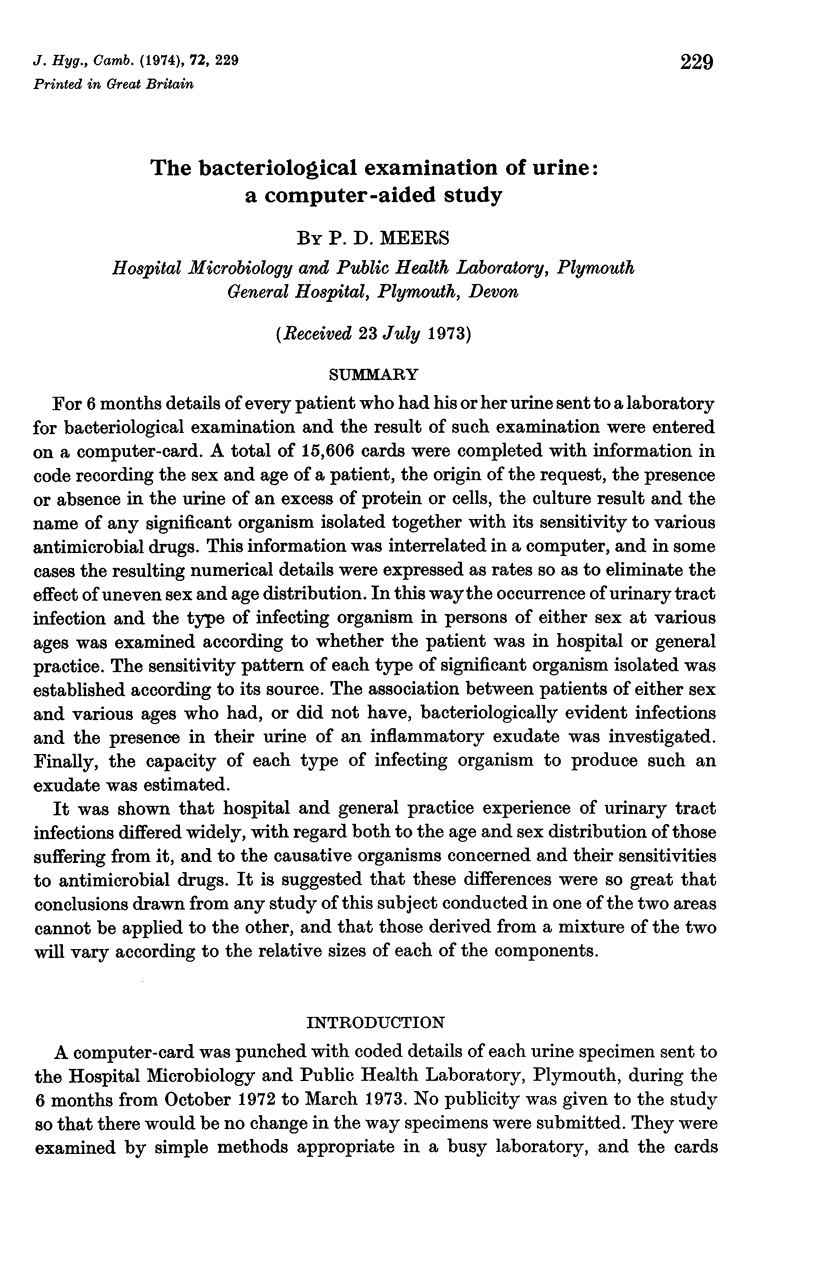
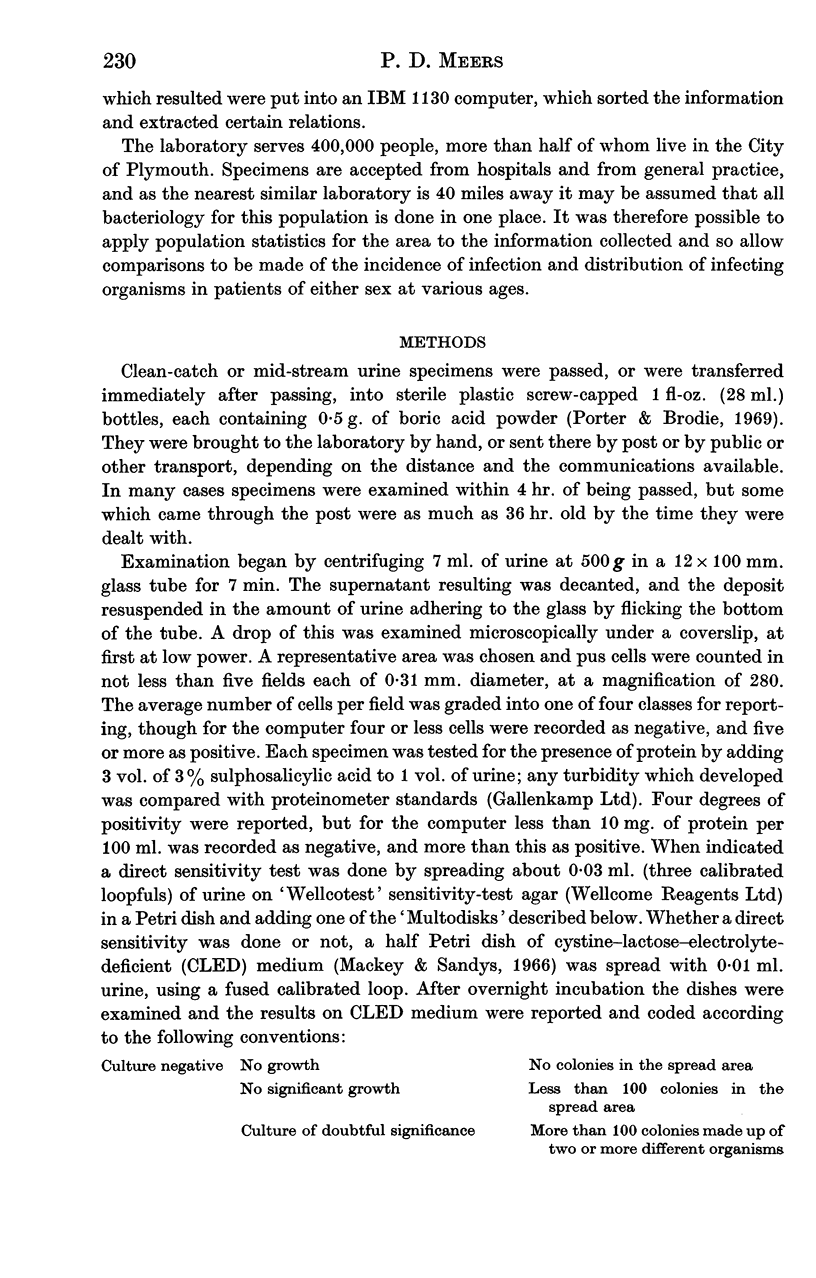
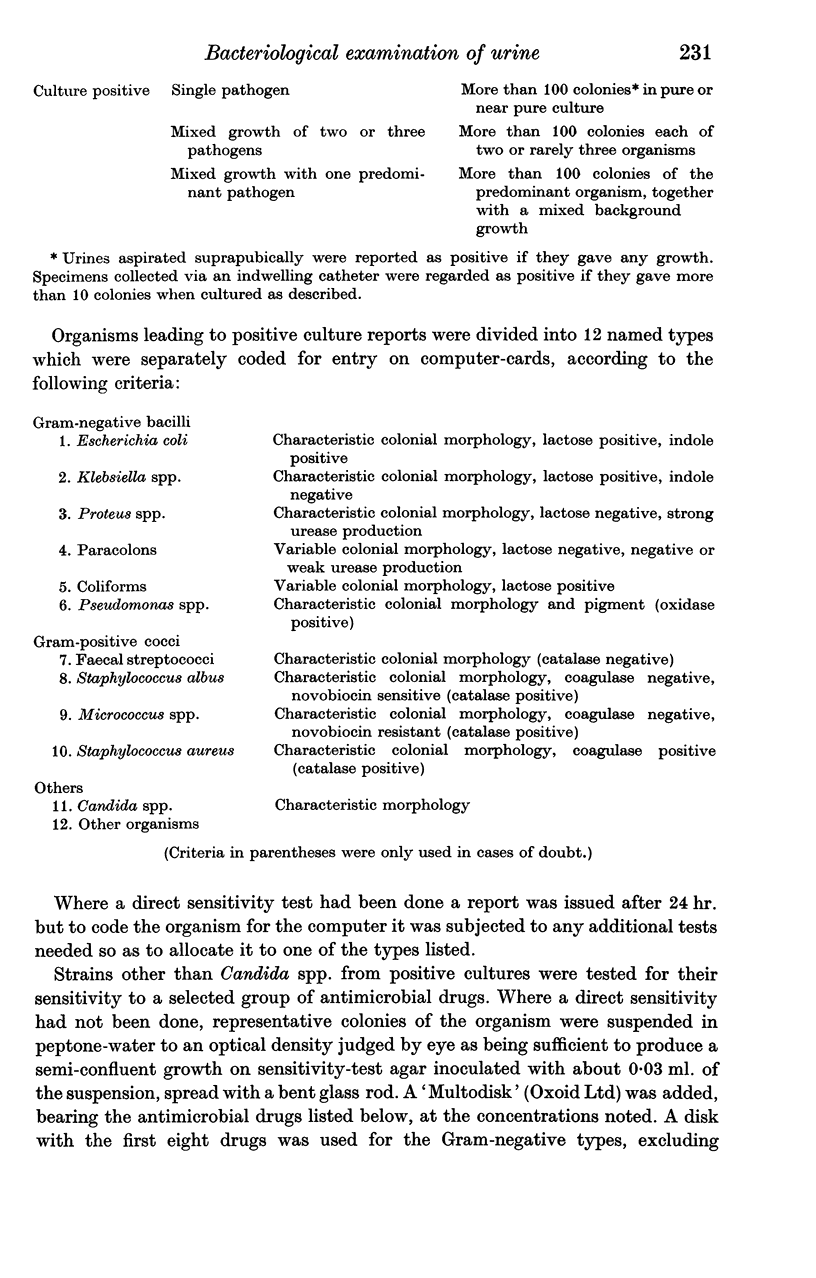
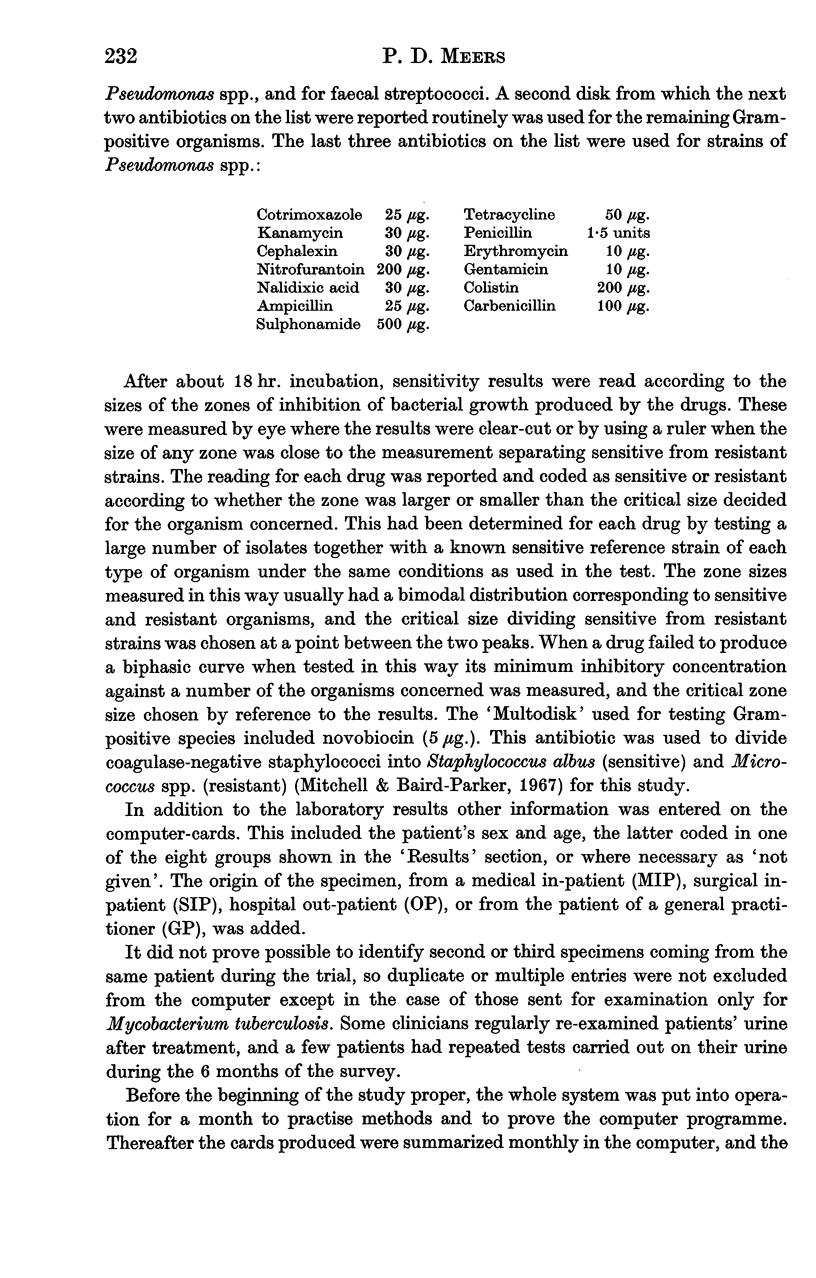
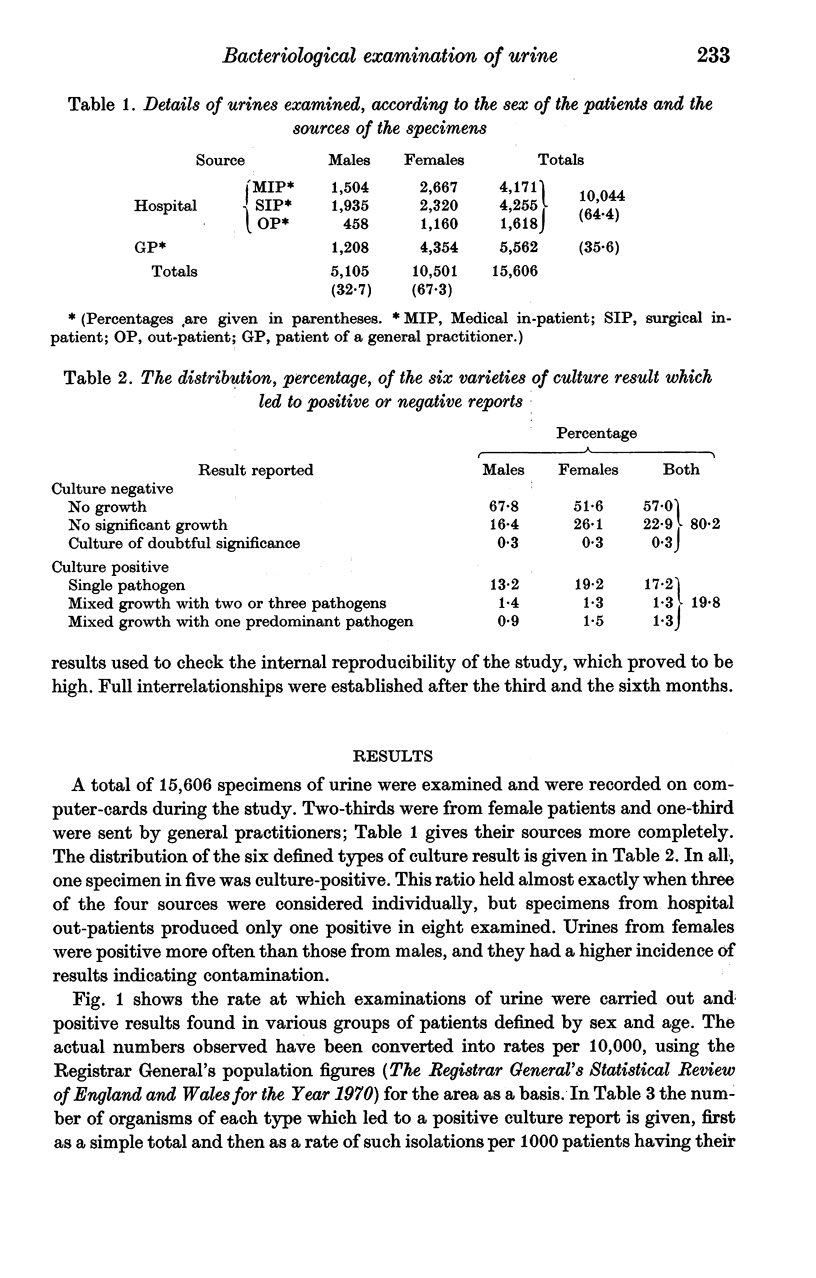
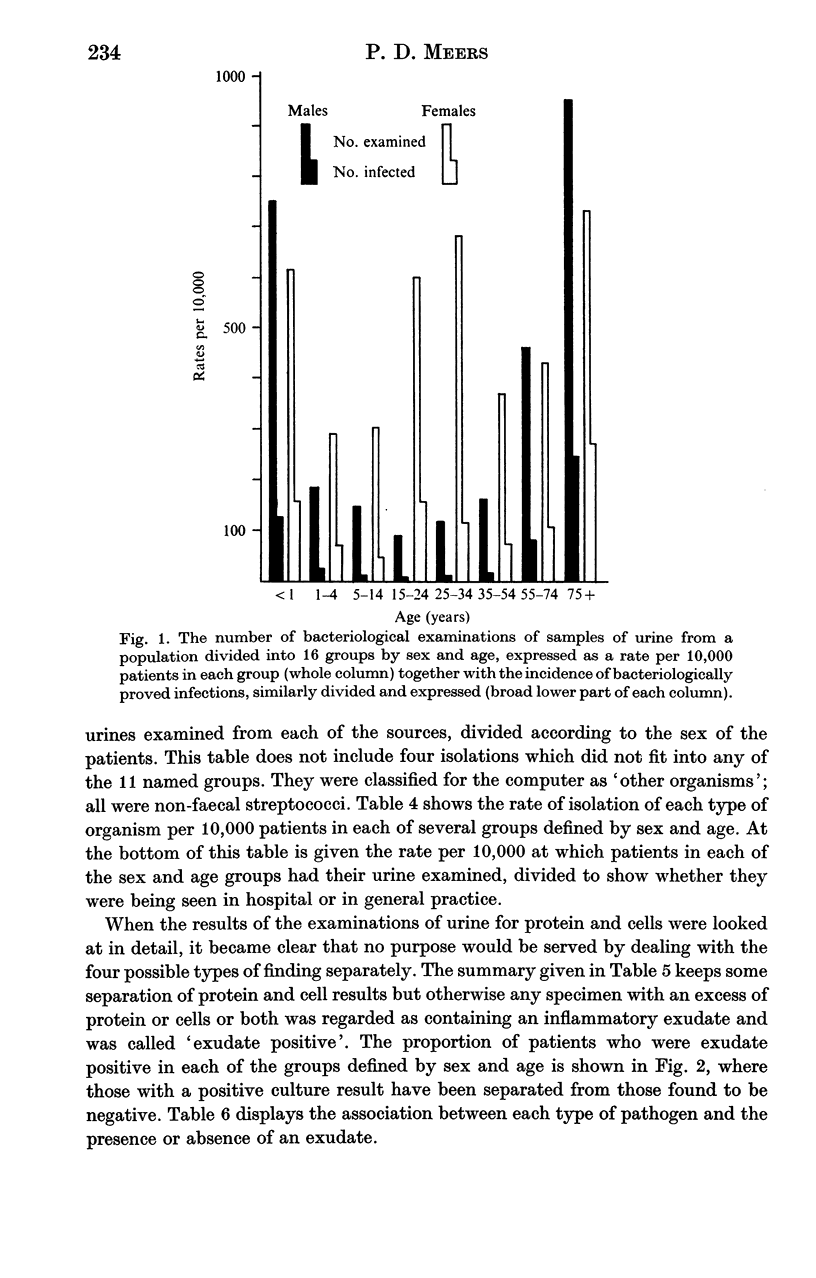
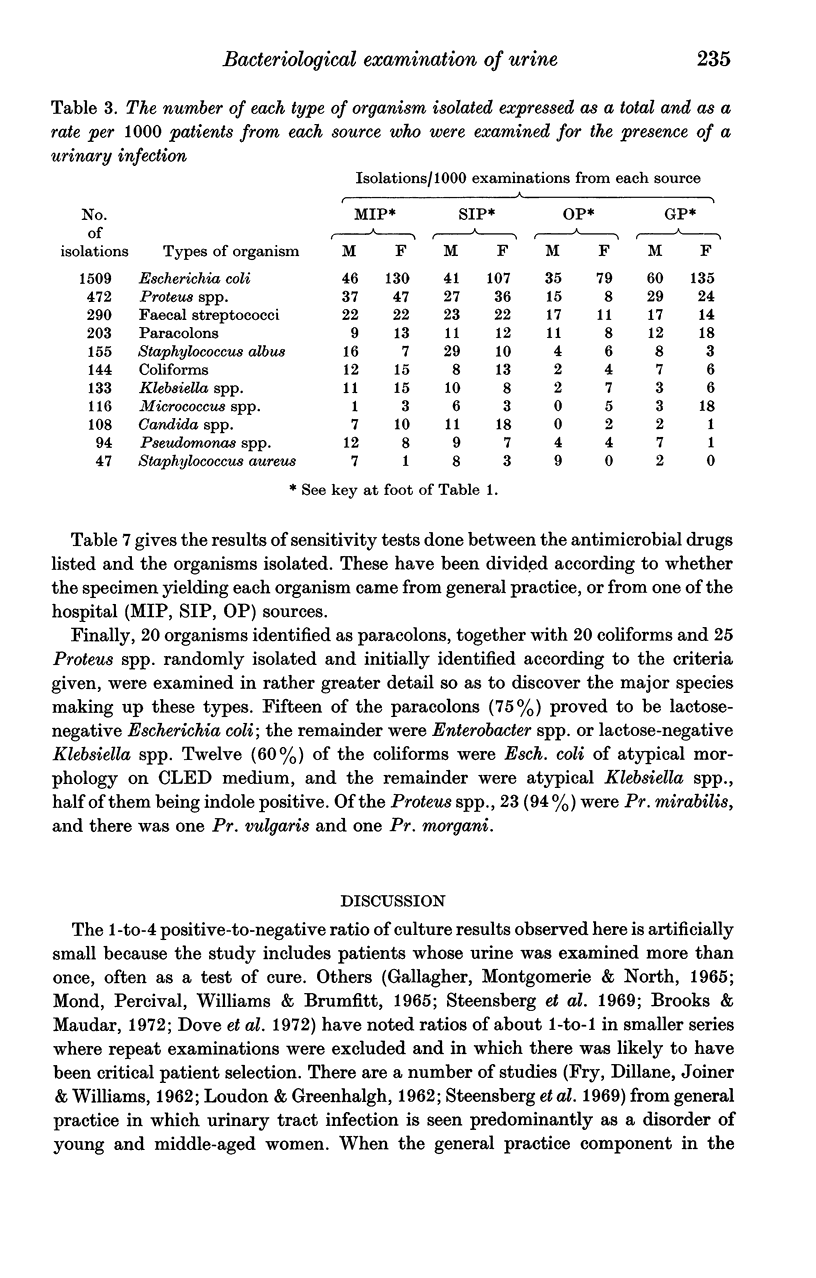
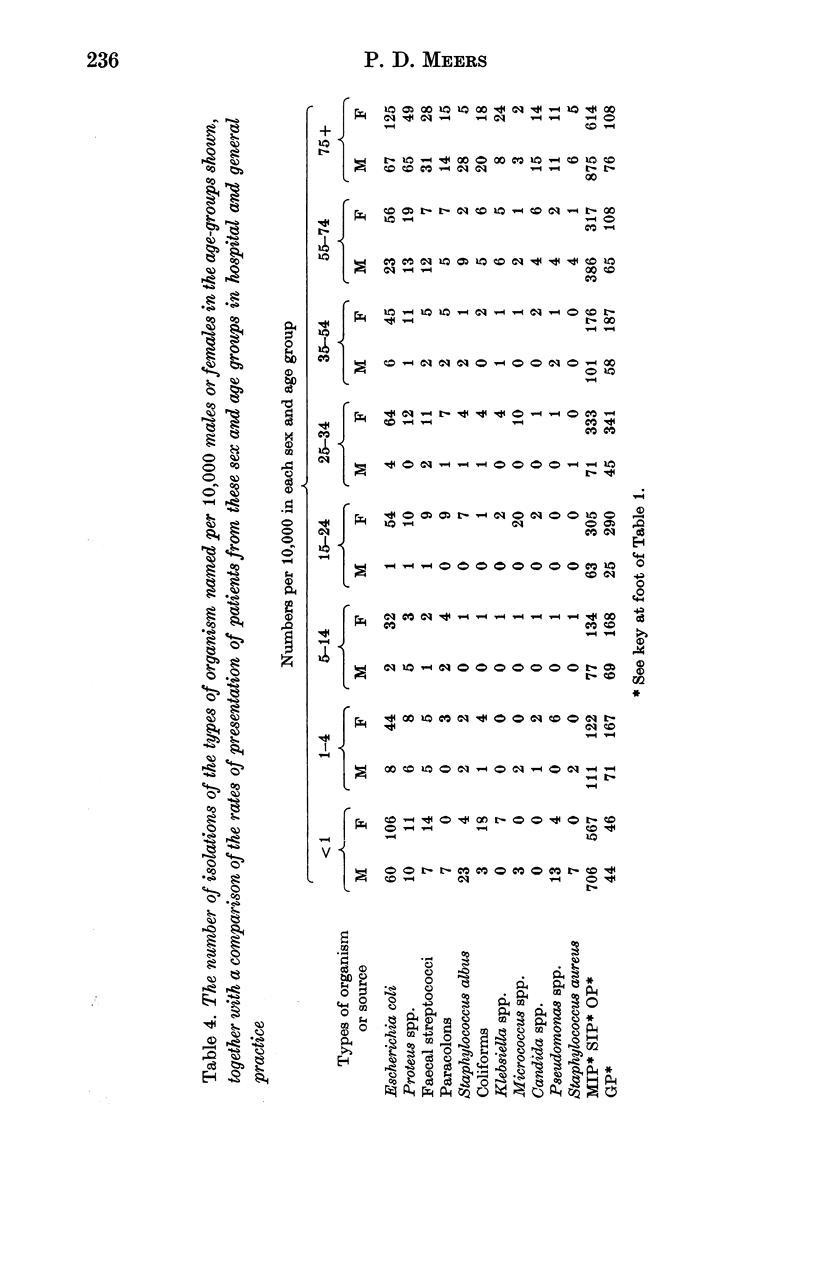
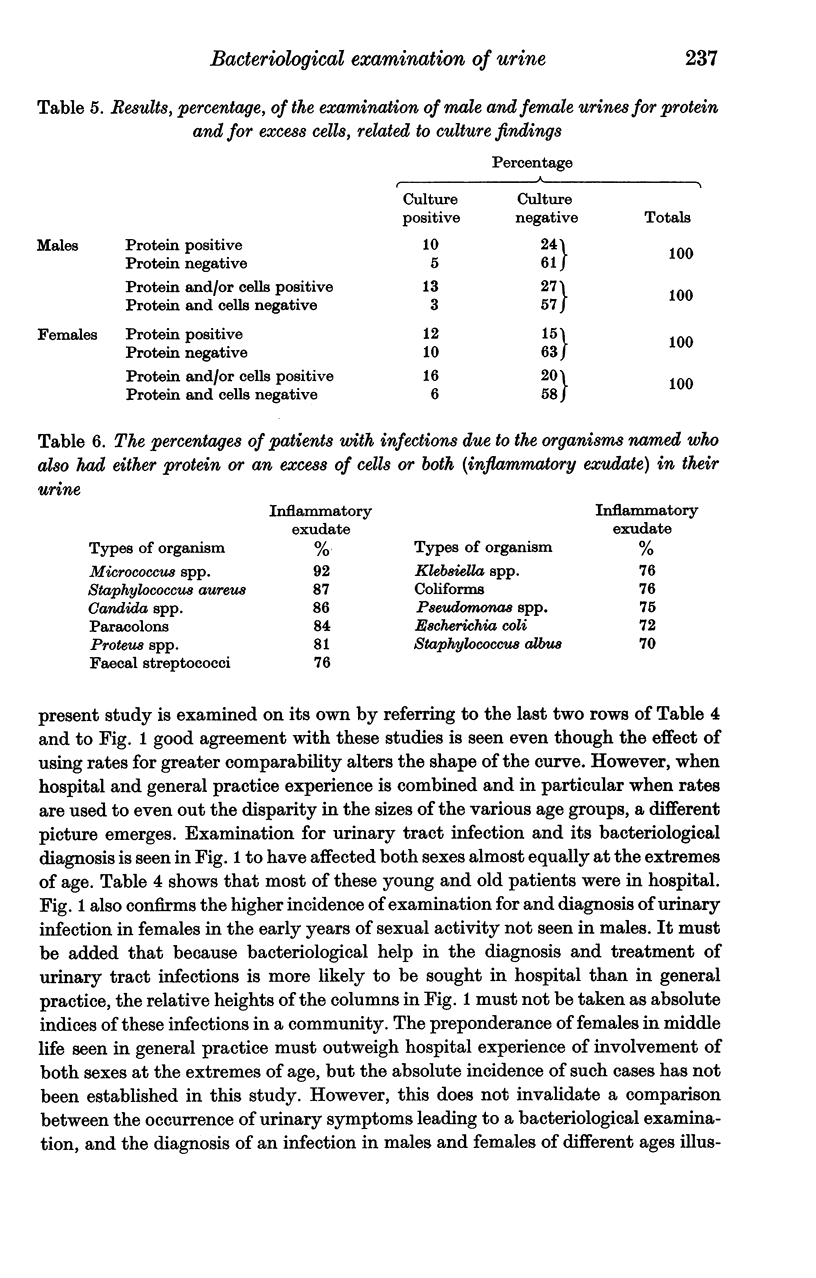
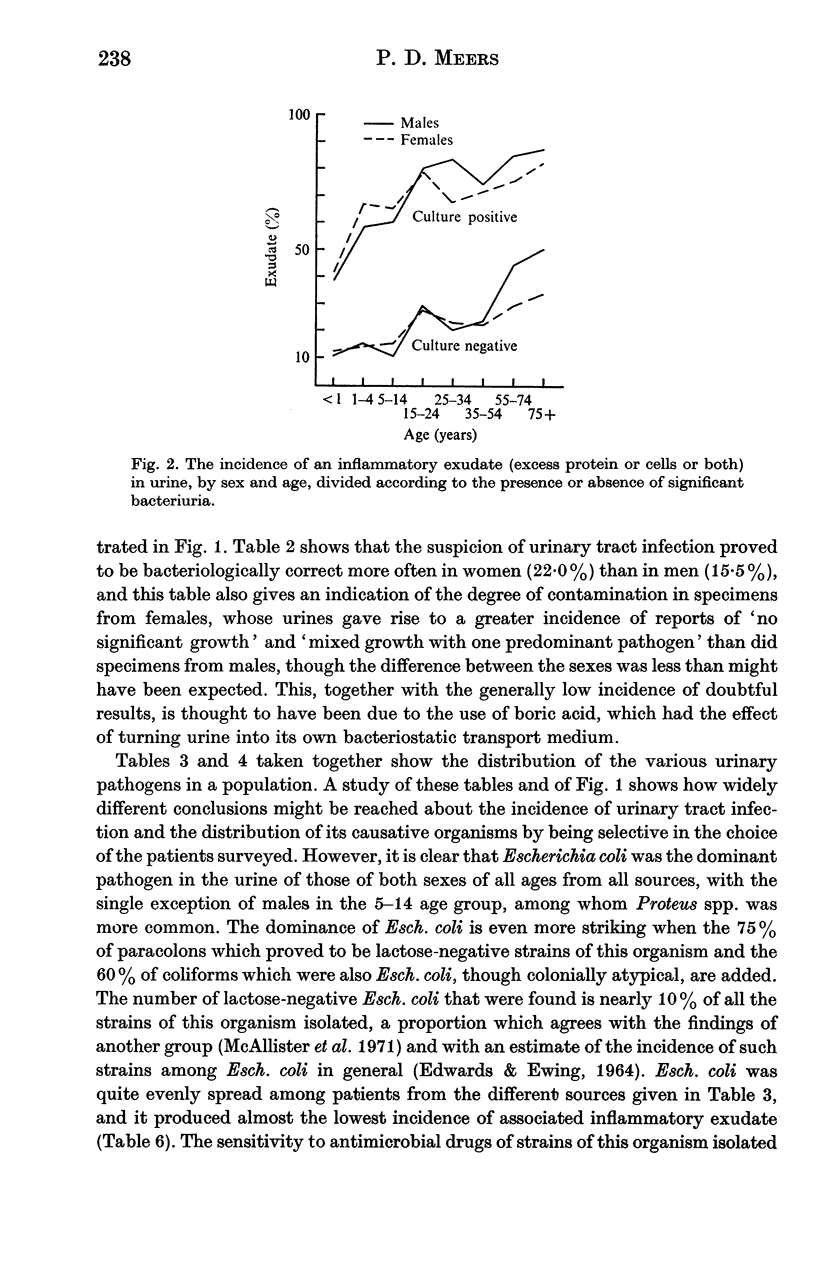
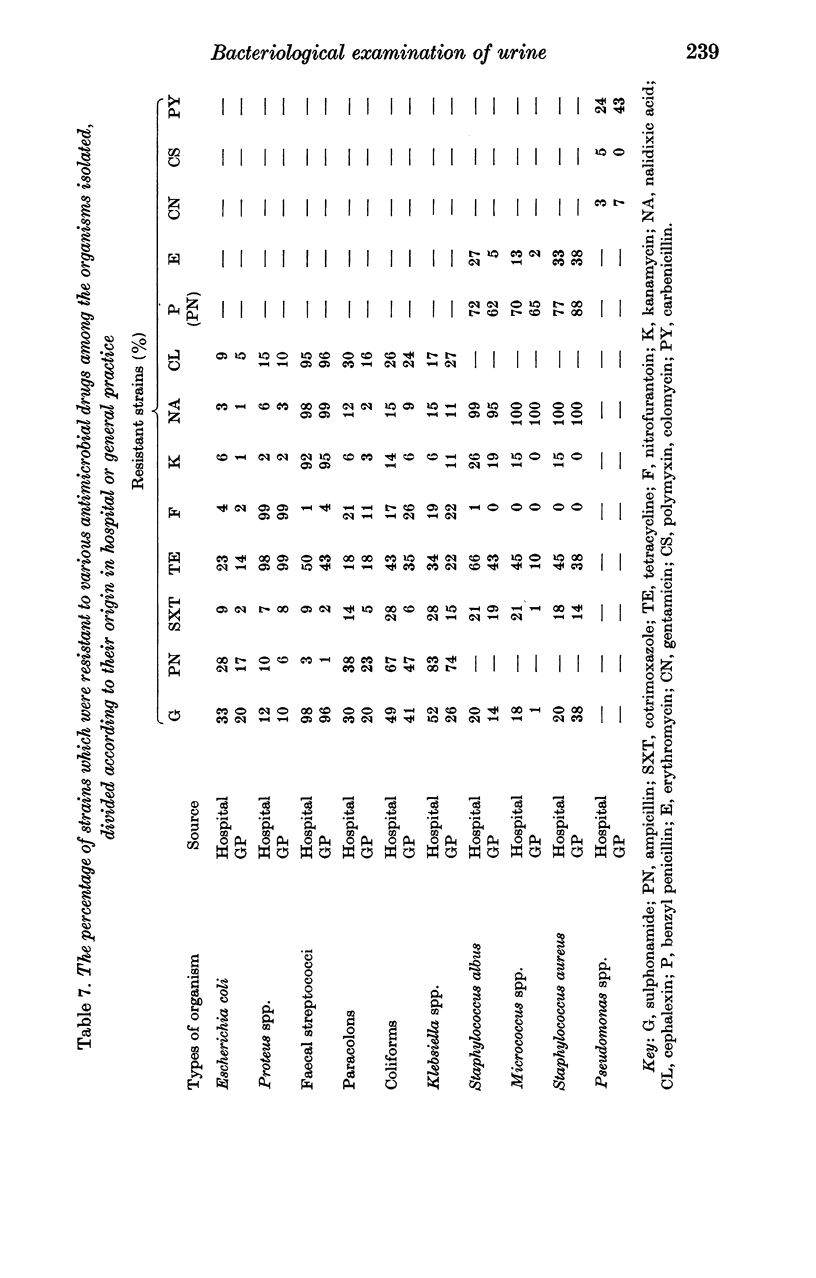
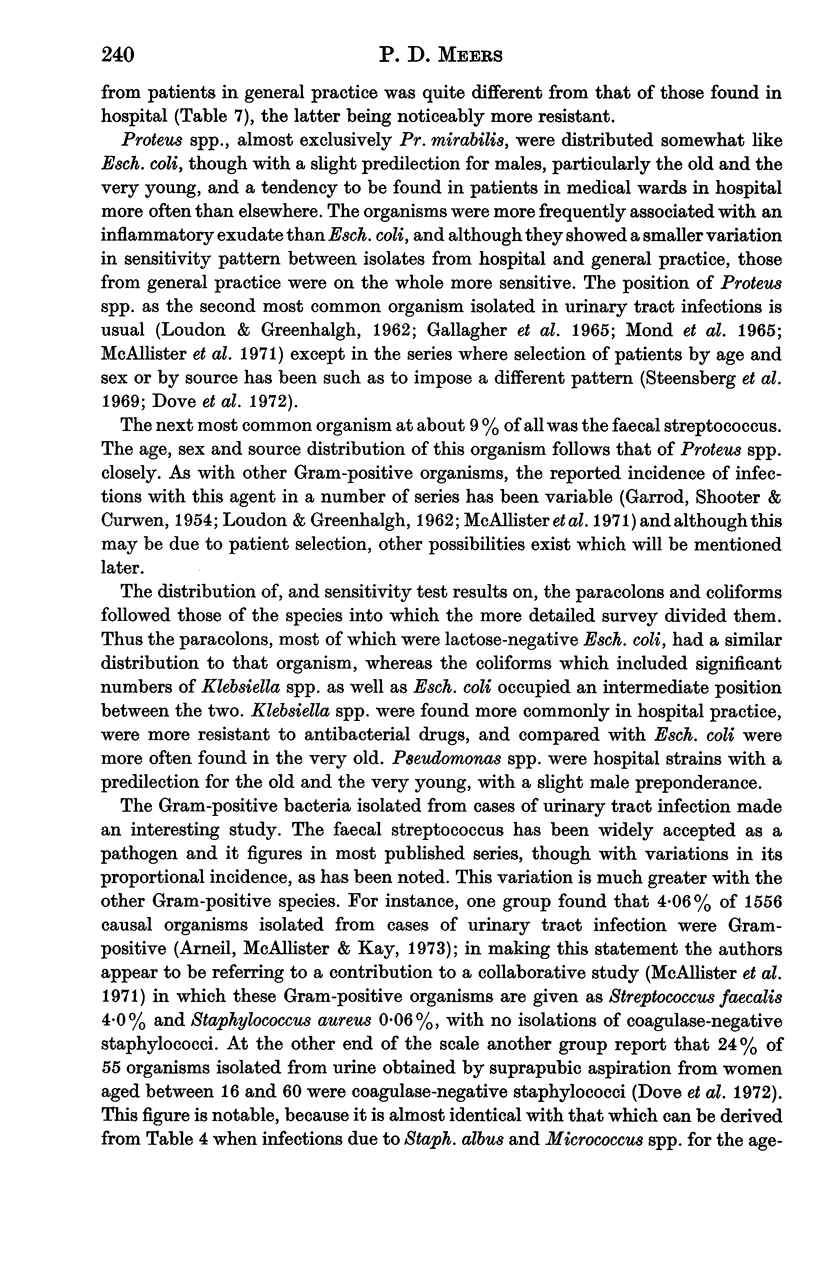
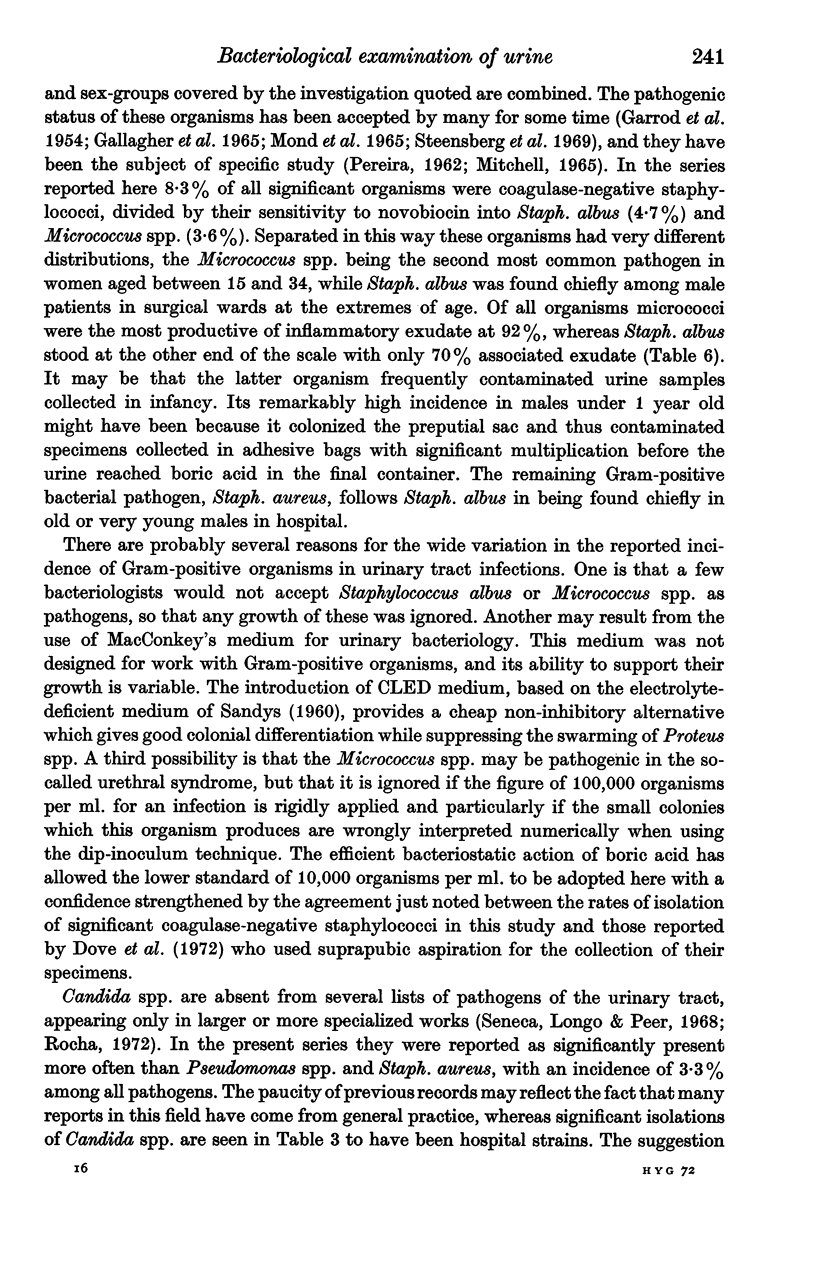
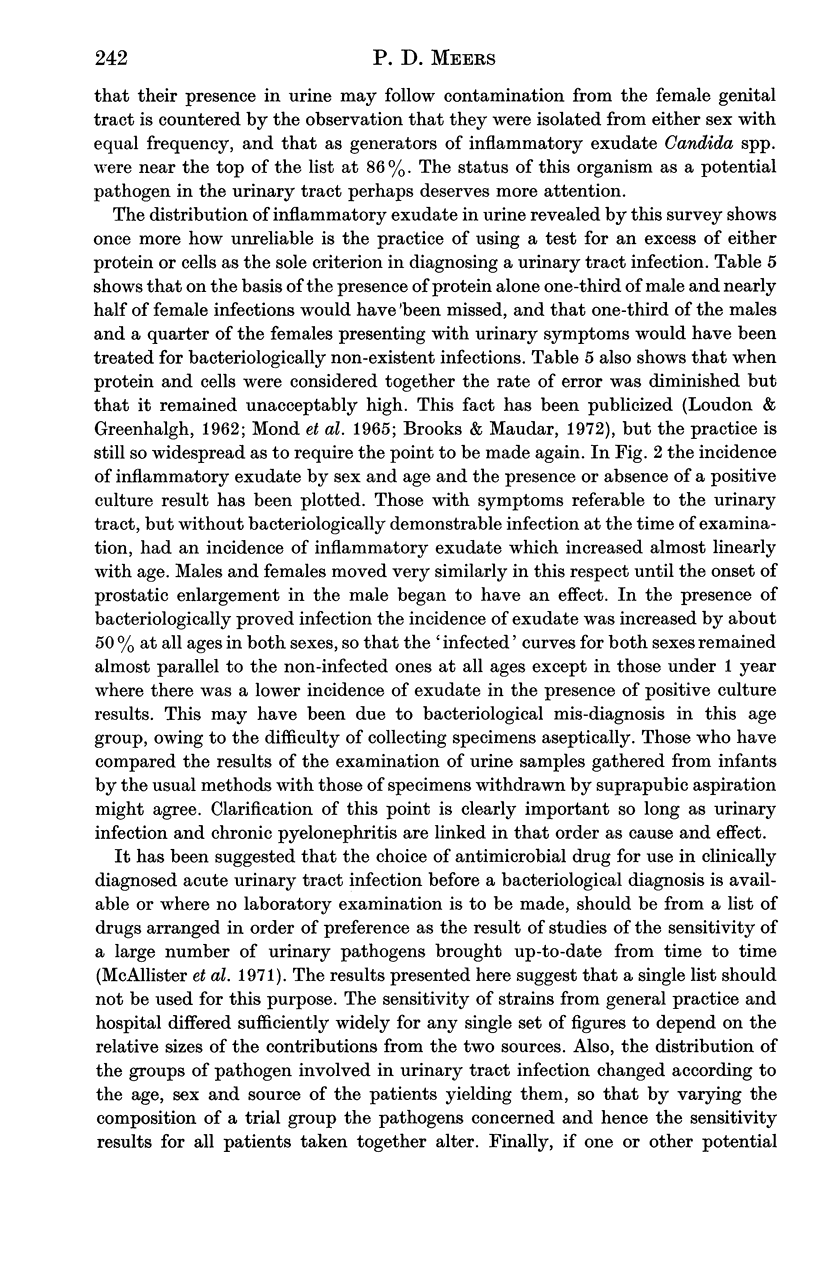
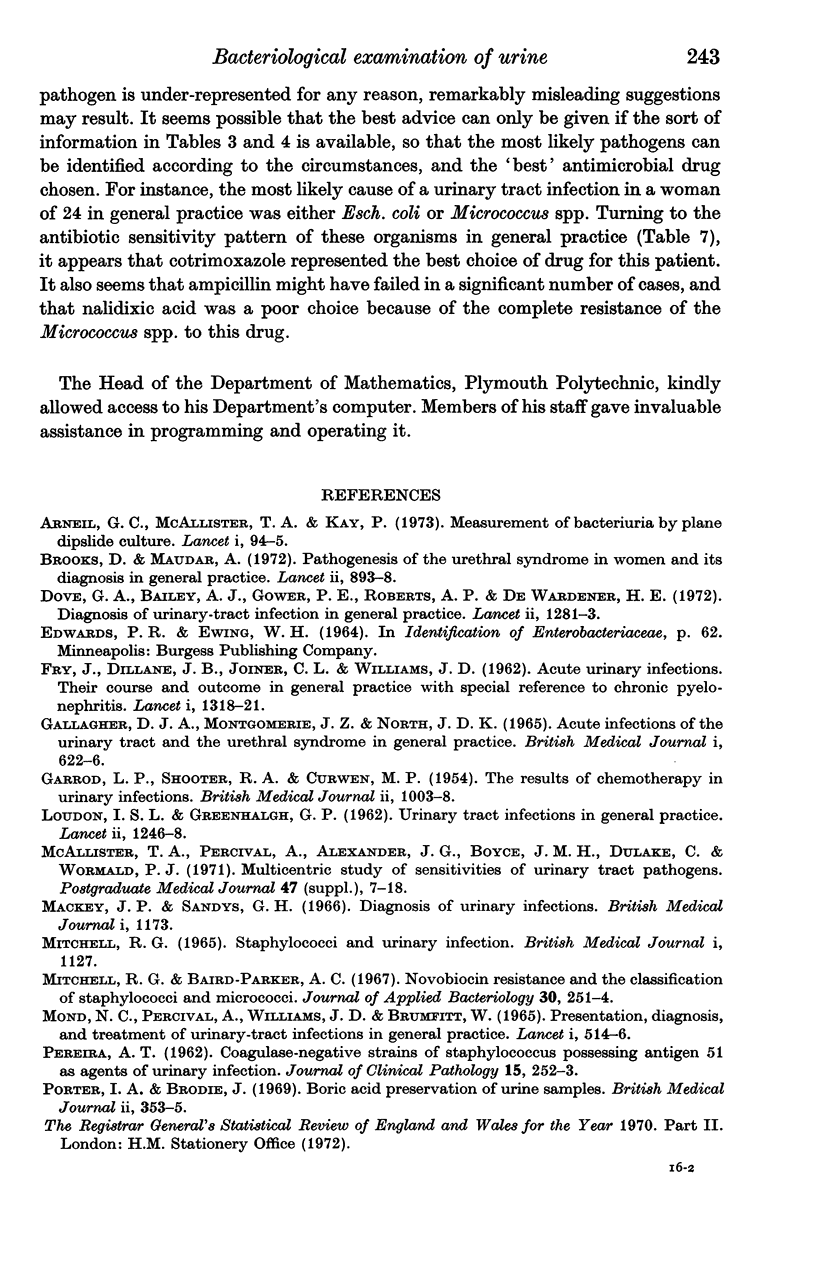
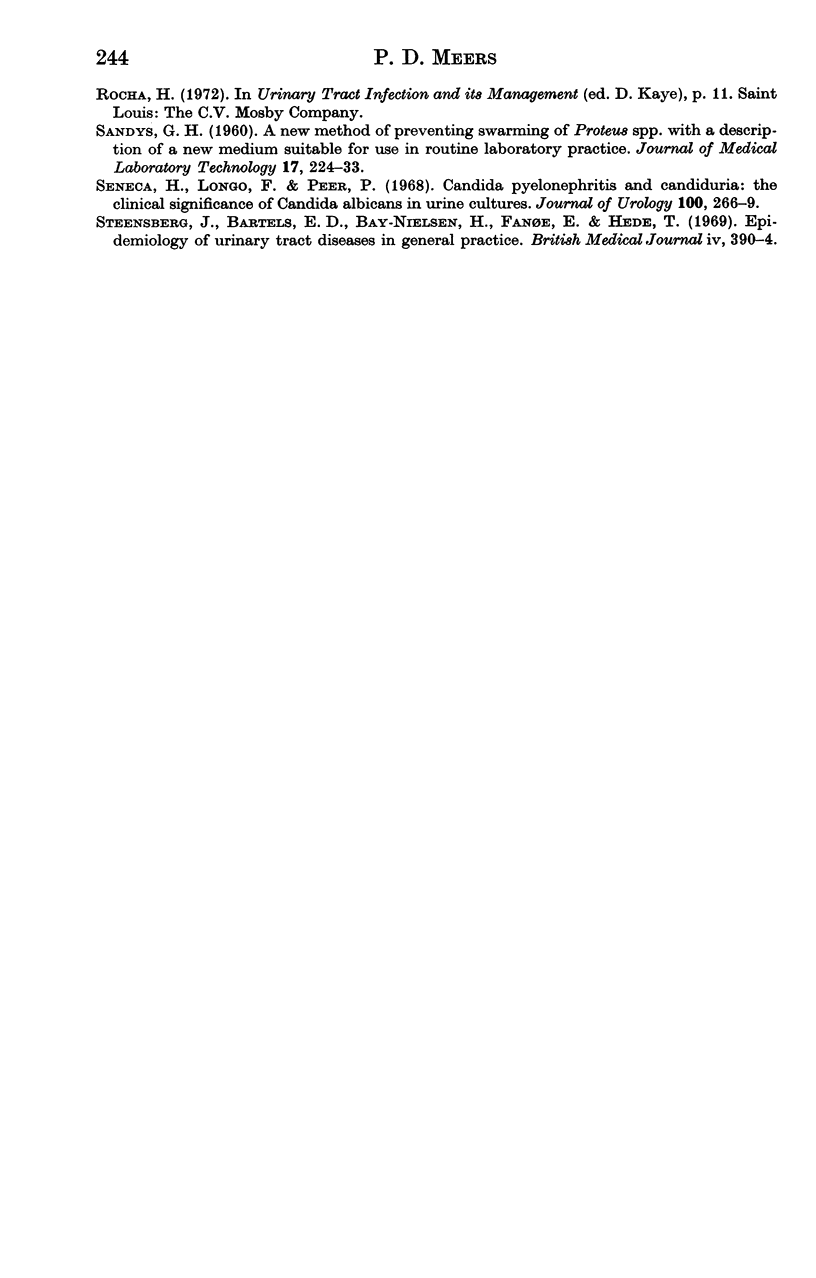
Selected References
These references are in PubMed. This may not be the complete list of references from this article.
- Arneil G. C., McAllister T. A., Kay P. Measurement of bacteriuria by plane dipslide culture. Lancet. 1973 Jan 13;1(7794):94–95. doi: 10.1016/s0140-6736(73)90484-4. [DOI] [PubMed] [Google Scholar]
- Brooks D., Maudar A. Pathogenesis of the urethral syndrome in women and its diagnosis in general practice. Lancet. 1972 Oct 28;2(7783):893–898. doi: 10.1016/s0140-6736(72)92532-9. [DOI] [PubMed] [Google Scholar]
- Dove G. A., Bailey A. J., Gower P. E., Roberts A. P., De Wardener H. E. Diagnosis of urinary-tract infection in general practice. Lancet. 1972 Dec 16;2(7790):1281–1283. doi: 10.1016/s0140-6736(72)92652-9. [DOI] [PubMed] [Google Scholar]
- FRY J., DILLANE J. B., JOINER C. L., WILLIAMS J. D. Acute urinary infections. Their course and outcome in general practice with special reference to chronic pyelonephritis. Lancet. 1962 Jun 23;1(7243):1318–1321. doi: 10.1016/s0140-6736(62)92421-2. [DOI] [PubMed] [Google Scholar]
- GALLAGHER D. J., MONTGOMERIE J. Z., NORTH J. D. ACUTE INFECTIONS OF THE URINARY TRACT AND THE URETHRAL SYNDROME IN GENERAL PRACTICE. Br Med J. 1965 Mar 6;1(5435):622–626. doi: 10.1136/bmj.1.5435.622. [DOI] [PMC free article] [PubMed] [Google Scholar]
- GARROD L. P., SHOOTER R. A., CURWEN M. P. The results of chemotherapy in urinary infections. Br Med J. 1954 Oct 30;2(4845):1003–1008. doi: 10.1136/bmj.2.4895.1003. [DOI] [PMC free article] [PubMed] [Google Scholar]
- MITCHELL R. G. STAPHYLOCOCCI AND URINARY INFECTION. Br Med J. 1965 Apr 24;1(5442):1127–1127. doi: 10.1136/bmj.1.5442.1127. [DOI] [PMC free article] [PubMed] [Google Scholar]
- MOND N. C., PERCIVAL A., WILLIAMS J. D., BRUMFITT W. PRESENTATION, DIAGNOSIS, AND TREATMENT OF URINARY-TRACT INFECTIONS IN GENERAL PRACTICE. Lancet. 1965 Mar 6;1(7384):514–516. doi: 10.1016/s0140-6736(65)92020-9. [DOI] [PubMed] [Google Scholar]
- McAllister T. A., Alexander J. G., Dulake C., Percival A., Boyce J. M., Wormald P. J. Multicentric study of sensitivities of urinary tract pathogens. Postgrad Med J. 1971 Sep;47(Suppl):7–14. [PubMed] [Google Scholar]
- Mitchell R. G., Baird-Parker A. C. Novobiocin resistance and the classification of staphylococci and micrococci. J Appl Bacteriol. 1967 Apr;30(1):251–254. doi: 10.1111/j.1365-2672.1967.tb00296.x. [DOI] [PubMed] [Google Scholar]
- Porter I. A., Brodie J. Boric acid preservation of urine samples. Br Med J. 1969 May 10;2(5653):353–355. doi: 10.1136/bmj.2.5653.353. [DOI] [PMC free article] [PubMed] [Google Scholar]
- SANDYS G. H. A new method of preventing swarming of Proteus sp. with a description of a new medium suitable for use in routine laboratory practice. J Med Lab Technol. 1960 Oct;17:224–233. [PubMed] [Google Scholar]
- Seneca H., Longo F., Peer P. Candida pyelonephritis and candiduria: the clinical significance of candida albicans in urine cultures. J Urol. 1968 Sep;100(3):266–269. doi: 10.1016/s0022-5347(17)62518-7. [DOI] [PubMed] [Google Scholar]
- Steensberg J., Bartels E. D., Bay-Nielsen H., Fanoe E., Hede T. Epidemiology of urinary tract diseases in general practice. Br Med J. 1969 Nov 15;4(5680):390–394. doi: 10.1136/bmj.4.5680.390. [DOI] [PMC free article] [PubMed] [Google Scholar]
- TORRES PEREIRA A. Coagulase-negative strains of staphylococcus possessing antigen 51 as agents of urinary infection. J Clin Pathol. 1962 May;15:252–253. doi: 10.1136/jcp.15.3.252. [DOI] [PMC free article] [PubMed] [Google Scholar]


